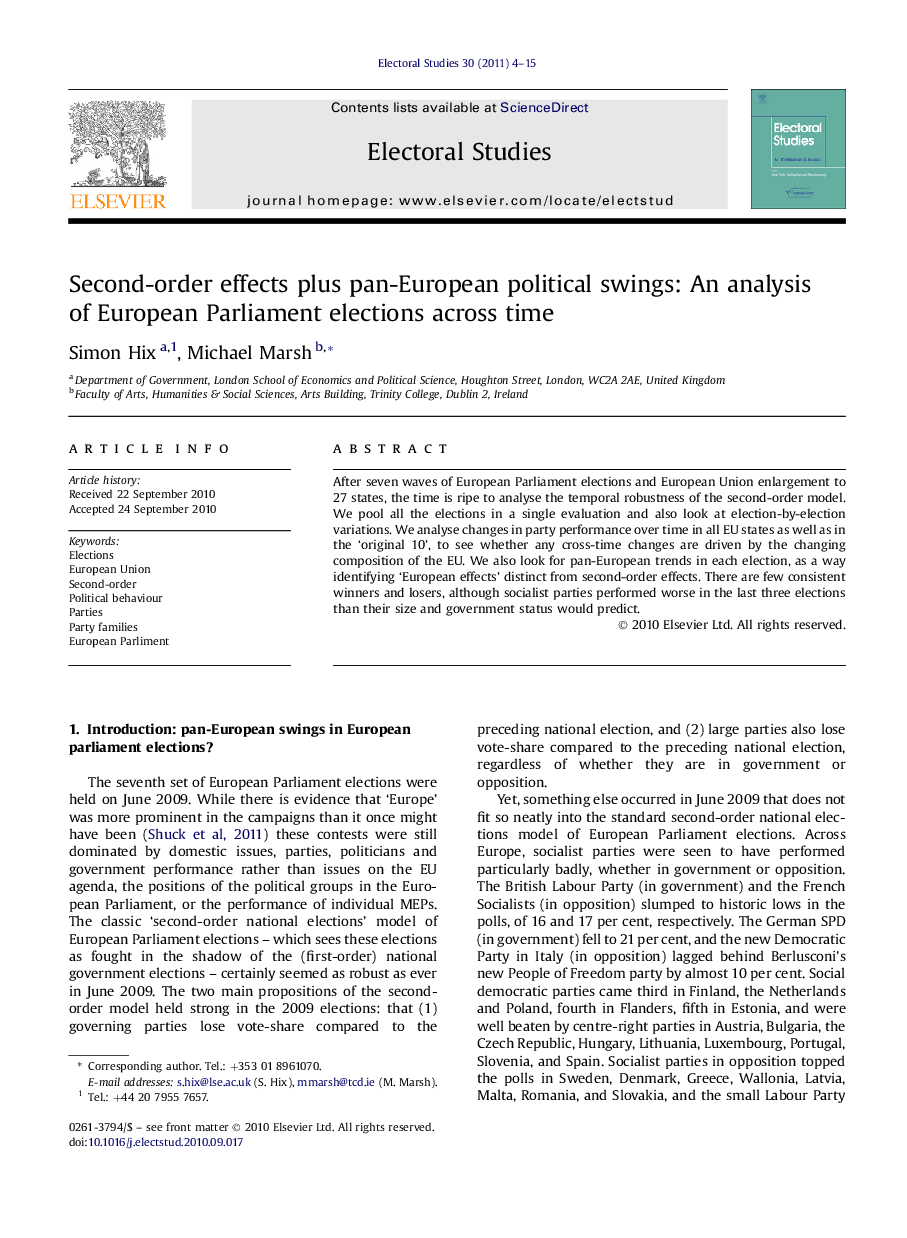| Article ID | Journal | Published Year | Pages | File Type |
|---|---|---|---|---|
| 1052226 | Electoral Studies | 2011 | 12 Pages |
After seven waves of European Parliament elections and European Union enlargement to 27 states, the time is ripe to analyse the temporal robustness of the second-order model. We pool all the elections in a single evaluation and also look at election-by-election variations. We analyse changes in party performance over time in all EU states as well as in the ‘original 10’, to see whether any cross-time changes are driven by the changing composition of the EU. We also look for pan-European trends in each election, as a way identifying ‘European effects’ distinct from second-order effects. There are few consistent winners and losers, although socialist parties performed worse in the last three elections than their size and government status would predict.
Research highlights► European elections 2009 broadly confirm to second order model. ► Government losses similar since 1994. ► Bonus for anti-EU bonus is declining in weight and not significant in 2009. ► Signs of election specific pan-European swings such an anti-socialist in 2009.
